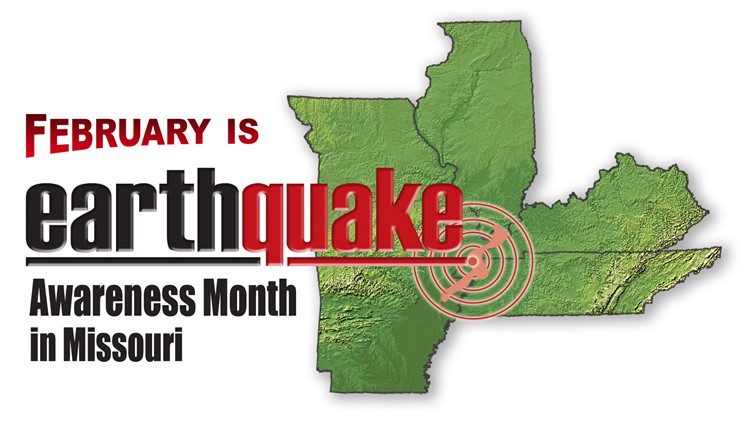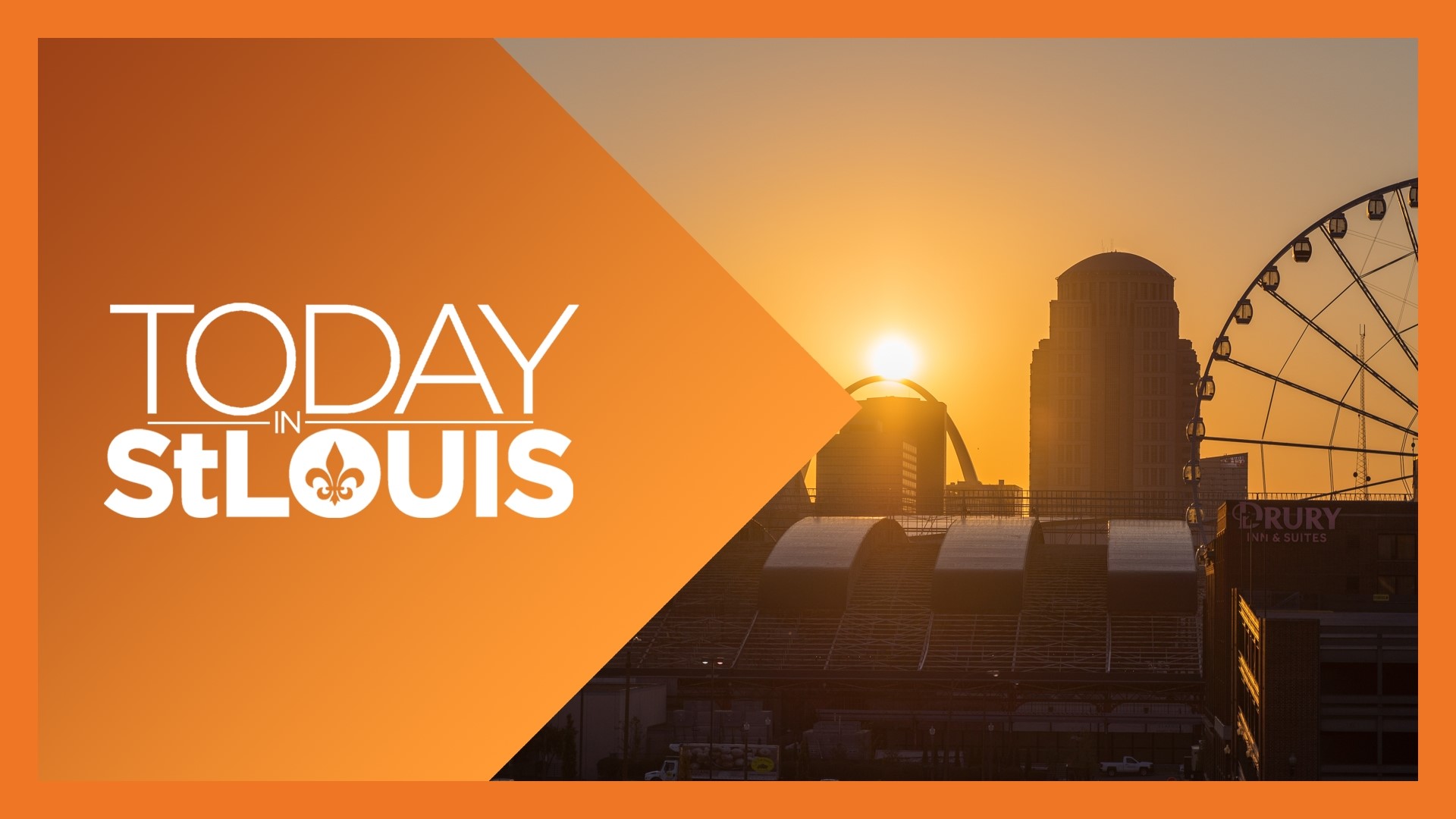MISSOURI, USA — February is Missouri Earthquake Awareness Month with a focus on the importance of being prepared in the event of an earthquake.
Some may not know that southeastern Missouri is part of the New Madrid Seismic Zone (NMSZ). Other areas included in the NMSZ are southern Illinois, northeastern Arkansas, western Tennessee and western Kentucky, according to the Missouri Department of Natural Resources.
The NMSZ is the most active seismic zone in the United States east of the Rocky Mountains, according to the Missouri Department of Natural Resources.
New Madrid Seismic Zone large earthquakes
Although most of the earthquakes that happen in the NMSZ are too small to be felt, the NMSZ has produced three major earthquakes believed to be larger than a 7.0 magnitude.
The earthquakes happened between Dec. 16, 1811 and Feb. 7, 1812. The quakes rang church bells hundreds of miles away, destroyed buildings and even caused the Mississippi River to run backwards for a short period of time, according to a news release from the State of Missouri State Emergency Management Agency on Earthquake Awareness Month.
Buildings in St. Louis, 150 miles north of the earthquakes, suffered damage like broken chimneys and broken stone buildings, the Missouri Dept. of Natural Resources said.
People as far as Louisville, Kentucky, and Cincinnati, Ohio, were reported to have felt the tremors associated with the earthquakes, according to the Missouri Dept. of Natural Resources.
The NMSZ produces roughly 200 earthquakes per year, but most are not felt, according to the release. The probability of a large earthquake is hard to predict, but another high magnitude earthquake in the New Madrid Seismic Zone could have a very significant impact, and still pose a risk, the release said.
“A major earthquake in Southeast Missouri could potentially be the worst natural disaster the state has ever experienced, and it would occur without warning,” SEMA Director Jim Remillard said in the release. “Earthquake Awareness Month is an important time to learn about this specific hazard and prepare to protect your family.”
How to prepare for an earthquake
The best thing you can do during Earthquake Awareness Month is learn how to prepare for an earthquake. Missouri State Emergency Management Agency (SEMA) has some tips on what you can and should do to be prepared.
- Create an emergency/ "go" kit for during an earthquake by storing bottled drinking water, canned and dried non-perishable food that does not need to be cooked (tuna and crackers, for example), a can opener, flashlights, first aid supplies, battery powered radio, seasonal clothing and blankets. The kit can be used if you need to shelter in place or evacuate in an emergency
- Identify safe spots and danger zones in every room of your home.
- Know how to shut off all your utilities.
- Be sure your house is firmly anchored to its foundation.
- Anchor overhead light fixtures.
- Store bottled foods, glass, china and other breakable items on low shelves or in cabinets that can fasten shut. Place large or heavy objects on lower shelves.
- Buy earthquake insurance.
- Anchor bookshelves and heavy furniture to walls to keep it from falling.
- Securely fasten water heaters and gas appliances to wall studs.
- Install flexible lines to water heaters, gas stoves and other appliances.
- Check for and repair any defective electrical wiring
Staying safe during an earthquake
If you are ever in an earthquake, Missouri SEMA has some tips on how to stay safe and protect yourself.
If inside: Take cover under sturdy furniture or against an inside wall. Remember the saying "Drop, Cover and Hold On." This means to drop to the floor, take cover, protect your head and neck with your arms and hold onto the sturdy piece of furniture you are under, Missouri SEMA said.
If outside: If you are outside when the shaking starts, stay there and move away from buildings, streetlights and utility poles.
If in a high-rise building: Stay where you are and take cover under sturdy furniture away from windows and outside walls. Do not use elevators. Wait for instructions from safety personnel because evacuation may not be necessary.
If in a vehicle: Stop quickly and safely. Stay in the vehicle. Avoid stopping near or under buildings, trees, overpasses or utility poles/wires.
What to do after an earthquake
It is important to remember to do these things immediately after an earthquake, according to Missouri SEMA.
- Check for injuries.
- Prepare for aftershocks.
- Wear sturdy shoes in areas covered with fallen debris and broken glass.
- If the electricity is out – use flashlights or battery operated lanterns. Check the main utility panel.
- If you smell gas or hear a hissing sound – open a window and leave the building. Shut off the main gas valve outside the building.
- If water pipes are damaged – shut off the water supply at the main valve.
- Check your home and chimney for structural damage
- Check household appliances for damage.
- Clean up spilled medicines, bleaches, gasoline and other flammable liquids.
- Do not flush toilets until you know sewage lines are intact.
- Open cabinets cautiously because objects may fall off shelves.
- Use the phone only to report a life-threatening emergency.
- Listen to news reports for the latest emergency information.
Earthquakes are nearly impossible to track, and can happen at any time. Earthquakes can be deadly, and are just as dangerous as any other natural disaster. Learning more about earthquake prepardeness, especially during Earthquake Awareness Month in Missouri, can help prepare you in the event you ever experience an earthquake while living in the New Madrid Seismic Zone.
To learn more about the New Madrid Seismic Zone, click here.
To view more resources and learn more about earthquake preparedness, visit Missouri SEMA's website by clicking here.
To watch 5 On Your Side broadcasts or reports 24/7, 5 On Your Side is always streaming on 5+. Download for free on Roku or Amazon Fire TV.



